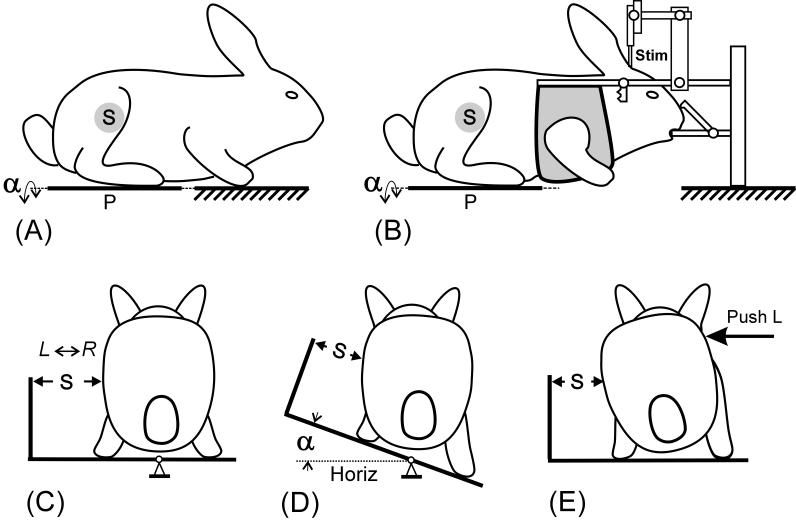Fig. 2.
Two types of experiments, with the animal not restrained (A), and with the head fixed in a stereotaxic device (B). (A-C) Hindlimbs of the rabbit were standing on the platform P, which could be tilted in the transverse plane (α, platform tilt angle), whereas forelimbs either had a stationary position (A) or were suspended (B). (D and E) Two tests for postural reactions during standing were used: (D) lateral tilts of the platform for ±20°, and (E) lateral pushes in the lumbar region. Mechanical sensor S, positioned at a half-height of the caudal part of the body (C), measured lateral displacements of this part in relation to the platform during lateral tilts (D) and lateral pushes (E). Schematic body configurations in A-E were based on video recordings.

